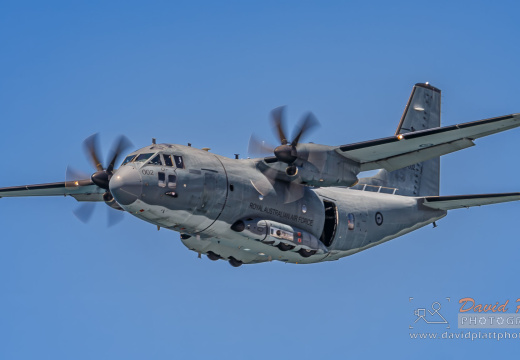
Alenia L3 C27 Spartan
The C-27J Spartan complements the Australian Defence Force's existing air mobility fleet. The first Spartan arrived in Australia in 2015. The fleet of 10 aircraft are operated by No. 35 Squadron and based at RAAF Base Amberley. The capabilities of the C-27J bridge the gap between Army helicopters and larger Air Force aircraft. The Spartan can operate from unsurfaced airstrips, and support humanitarian missions in remote locations. Much like the Hercules and Globemaster.
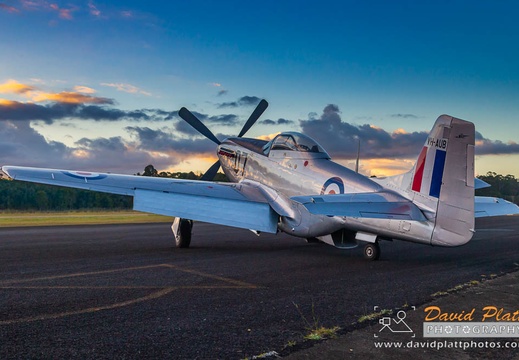
CAC-18 P51 Mustang
The CAC Mustang is an Australian variant of the North American P-51 Mustang. It was built under license by Commonwealth Aircraft Corporation in the final stages of World War II, and though it was too late to see combat, it did participate in the Occupation of Japan after VJ-Day.
In late 1946, CAC received a contract to build 170 (later reduced to 120) Mustangs locally from scratch. These aircraft carried the new designation CA-18, with the first 40 being designated Mustang Mk 21 and powered by Packard V-1710-7 Merlins. 66 Mustang Mk 23s followed with British-built Rolls-Royce Merlin 66 or 70 engines. 14 Mustang Mk 22 reconnaissance aircraft were built with F24 cameras, and a further 14 were converted from Mk 21s

Curtiss P-40 Kittyhawk
The Curtiss P-40 Warhawk is an American single-engined, single-seat, all-metal fighter and ground-attack aircraft that first flew in 1938. The P-40 design was a modification of the previous Curtiss P-36 Hawk which reduced development time and enabled a rapid entry into production and operational service. The Warhawk was used by most Allied powers during World War II, and remained in frontline service until the end of the war. It was the third most-produced American fighter of World War II, after the P-51 and P-47; by November 1944, when production of the P-40 ceased, 13,738 had been built.
Based on war-time victory claims, over 200 Allied fighter pilots – from the UK, Australia, New Zealand, Canada, South Africa, the US and the Soviet Union – became aces flying the P-40. These included at least 20 double aces.
Known in Australia as the Kittyhawk, it was the main fighter used by the RAAF in World War II, in greater numbers than the Spitfire. Two RAAF squadrons serving with the Desert Air Force, No. 3 and No. 450 Squadrons, were the first Australian units to be assigned P-40s. Other RAAF pilots served with RAF or SAAF P-40 squadrons in the theatre.
Many RAAF pilots achieved high scores in the P-40. At least five reached "double ace" status: Clive Caldwell, Nicky Barr, John Waddy, Bob Whittle (11 kills each) and Bobby Gibbes (10 kills) in the Middle East, North African and/or New Guinea campaigns. In all, 18 RAAF pilots became aces while flying P-40s.
The RAAF units that most used Kittyhawks in the South West Pacific were 75, 76, 77, 78, 80, 82, 84 and 86 Squadrons. These squadrons saw action mostly in the New Guinea and Borneo campaigns.

E-7A Wedgetail

F111
The Australian government ordered 24 F-111C aircraft to replace the RAAF's English Electric Canberras in the bombing and tactical strike role. The first F-111C was accepted at Nellis Air Force Base on 15 March 1973 with the RAAF's first six F-111Cs arriving at Amberley on 1 July 1973. In 1995 a further 15 F-111's were ordered to reduce the number of hours flown on the F-111C airframes, The F-111Gs were built as General Dynamics FB-111A strategic bombers, serving with USAF Strategic Air Command (SAC) ,these airframes had substantially lower accumulated airframe fatigue than the RAAF F-111c counterparts.
Compared to the basic F-111C airframe, the F-111G carries an additional 585 USG of JP-4 fuel which is about 3,500 lb or 11% more than the basic capacity. The fuselage and wing tank capacity is identical, at 4990 USG or about 32,400 lb. The engines deliver almost 20% higher thrust in service.
The last F-111s were retired on 3 December 2010, After 37 Years of Service.
In Australia, the F-111 was affectionately known as the "Pig"
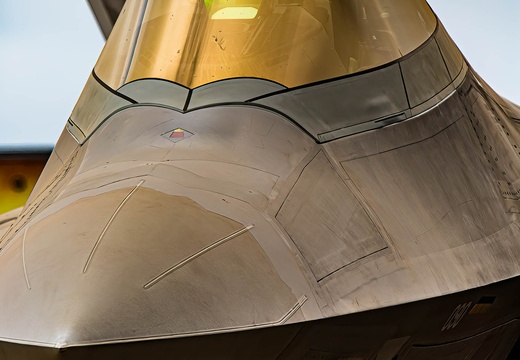
F22 Raptor
The Lockheed Martin F-22 Raptor is an American single-seat, twin-engine, all-weather stealth tactical fighter aircraft developed for the United States Air Force (USAF). The result of the USAF's Advanced Tactical Fighter (ATF) program, the aircraft was designed as an air superiority fighter, but also has ground attack, electronic warfare, and signals intelligence capabilities. The prime contractor, Lockheed Martin, built most of the F-22's airframe and weapons systems and conducted final assembly, while Boeing provided the wings, aft fuselage, avionics integration, and training systems.
The aircraft was variously designated F-22 and F/A-22 before it formally entered service in December 2005 as the F-22A. Despite its protracted development and operational difficulties, USAF considers the F-22 a critical component of its tactical airpower. The fighter’s combination of stealth, aerodynamic performance, and mission systems enable unprecedented air combat capabilities

F35 Lightning II
The Lockheed Martin F-35 Lightning II is an American family of single-seat, single-engine, all-weather stealth multirole combat aircraft that is intended to perform both air superiority and strike missions. It is also able to provide electronic warfare and intelligence, surveillance, and reconnaissance capabilities. Lockheed Martin is the prime F-35 contractor, with principal partners Northrop Grumman and BAE Systems.
Australia has committed to 72 F-35A aircraft for three operational squadrons at RAAF Base Williamtown and RAAF Base Tindal, and a training squadron at RAAF Base Williamtown.
The first F-35A aircraft was accepted into Australian service in 2018, with the first arriving in country in December that year. The first F-35A squadron, No. 3 Squadron, will be operational in 2021. All 72 aircraft are expected to be fully operational by 2023.
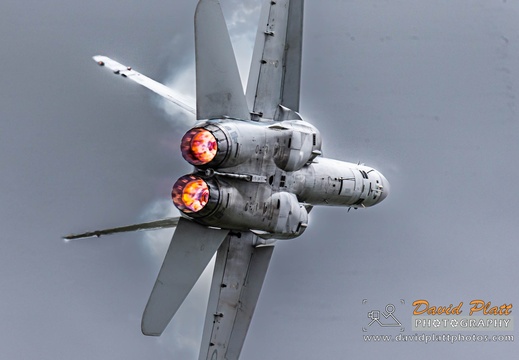
FA18 "Classic" Hornet
Delivered to the RAAF on the in 1984 The McDonnell Douglas/Boeing F/A-18A Hornet, official retired from RAAF Service on Monday 29/11/2021 after 36 Years of Service.
he McDonnell Douglas F/A-18 Hornet is a twin-engine, supersonic, all-weather, carrier-capable, multirole combat jet, designed as both a fighter and attack aircraft (hence the F/A designation). ..
The Royal Australian Air Force purchased 57 F/A-18A fighters and 18 F/A-18B two-seat trainers to replace its Dassault Mirage IIIOs...
F/A-18 deliveries to the RAAF began on 29 October 1984, and continued until May 1990,on the 11th December 2020 some 30 years later a large percentage of the fleet were retired from Service in the Australian Airforce.
Many of the RAAF Hornets will continue to fly with the Royal Canadian Air Force
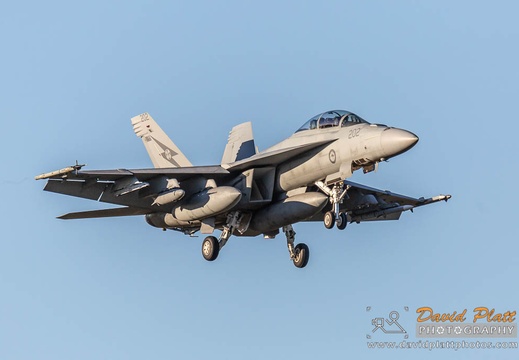
FA18 Super Hornet and Growler
In 2007, the Australian Government signed a contract to acquire 24 F/A-18Fs for the Royal Australian Air Force (RAAF), as an interim replacement for the F-111s of 1 and 6 Squadrons.
In 2008 the Australian Government purchased six EA-18Gs (Growlers ), which would be part of the order for 24 F/A-18F Super Hornets.
EA-18Gs (Growlers ) is a specialized version of the two-seat F/A-18F Super Hornet providing an electronic warfare platform, In 2013 the Australian Government purchased and additional 12 New Build Growlers.
Super Hornets are allocated serial number prefixed with A44, The Growler fleet was allocated the A46 rather than the A44 prefix to designate these airframes as new build Growlers as distinct from the Growler pre-wired airframes in the F/A-18F Super Hornet fleet
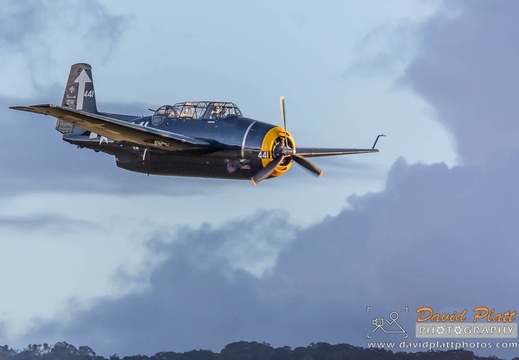
Grumman TBF Avenger
The Grumman TBF Avenger (designated TBM[1] for aircraft manufactured by General Motors) is an American World War II-era torpedo bomber developed initially for the United States Navy and Marine Corps, and eventually used by several air and naval aviation services around the world.
The Avenger entered U.S. service in 1942, and first saw action during the Battle of Midway. Despite the loss of five of the six Avengers on its combat debut, it survived in service to become the most effective[2] and widely-used torpedo bomber of World War II, sharing credit for sinking the super-battleships Yamato and Musashi (the only ships of that type sunk exclusively by American aircraft while under way) and being credited for sinking 30 submarines. Greatly modified after the war, it remained in use until the 1960s
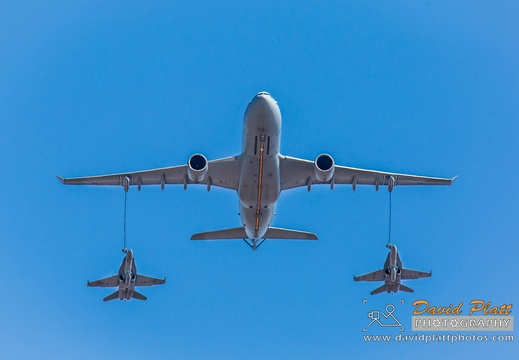
KC-30A Multi-Role Tanker Transport
The KC-30A Multi-Role Tanker Transport (MRTT) is a heavily modified Airbus A330 airliner that allows the Air Force to conduct air-to-air refuelling and provide strategic air lift.
It features advanced communication and navigation systems, and an electronic warfare self-protection system for shielding against threats from surface-to-air missiles.
The Air Force's seven KC-30A aircraft are based at RAAF Base Amberley, operated by No. 33 Squadron.
The KC-30A MRTT is fitted with two forms of air-to-air refuelling systems: an Advanced Refuelling Boom System mounted on the tail of the aircraft and a pair of all-electric refuelling pods under each wing.